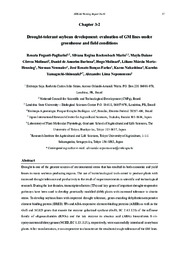Drought-tolerant soybean development: evaluation of GM lines under greenhouse and field conditions.
Drought-tolerant soybean development: evaluation of GM lines under greenhouse and field conditions.
Author(s): FUGANTI-PAGLIARINI, R.; MARIN, S. R. R.; MOLINARI, M. D. C.; BARBOSA, D. de A.; MOLINARI, H. B. C.; MERTZ-HENNING, L. M.; NEUMAIER, N.; FARIAS, J. R. B.; NAKASHIMA, K.; YAMAGUCHI-SHINOZAKI, K.; NEPOMUCENO, A. L.
Publication year: 2020
Types of publication: Book sections
Unit: Embrapa Soybean
Observation
Some of Embrapa's publications are published as ePub files. To read them, use or download one of the following free software options to your computer or mobile device. Android: Google Play Books; IOS: iBooks; Windows and Linux: Calibre.
Access other publications
Access the Agricultural Research Database (BDPA) to consult Embrapa's full library collection and records.
Visit Embrapa Bookstore to purchase books and other publications sold by Embrapa.

